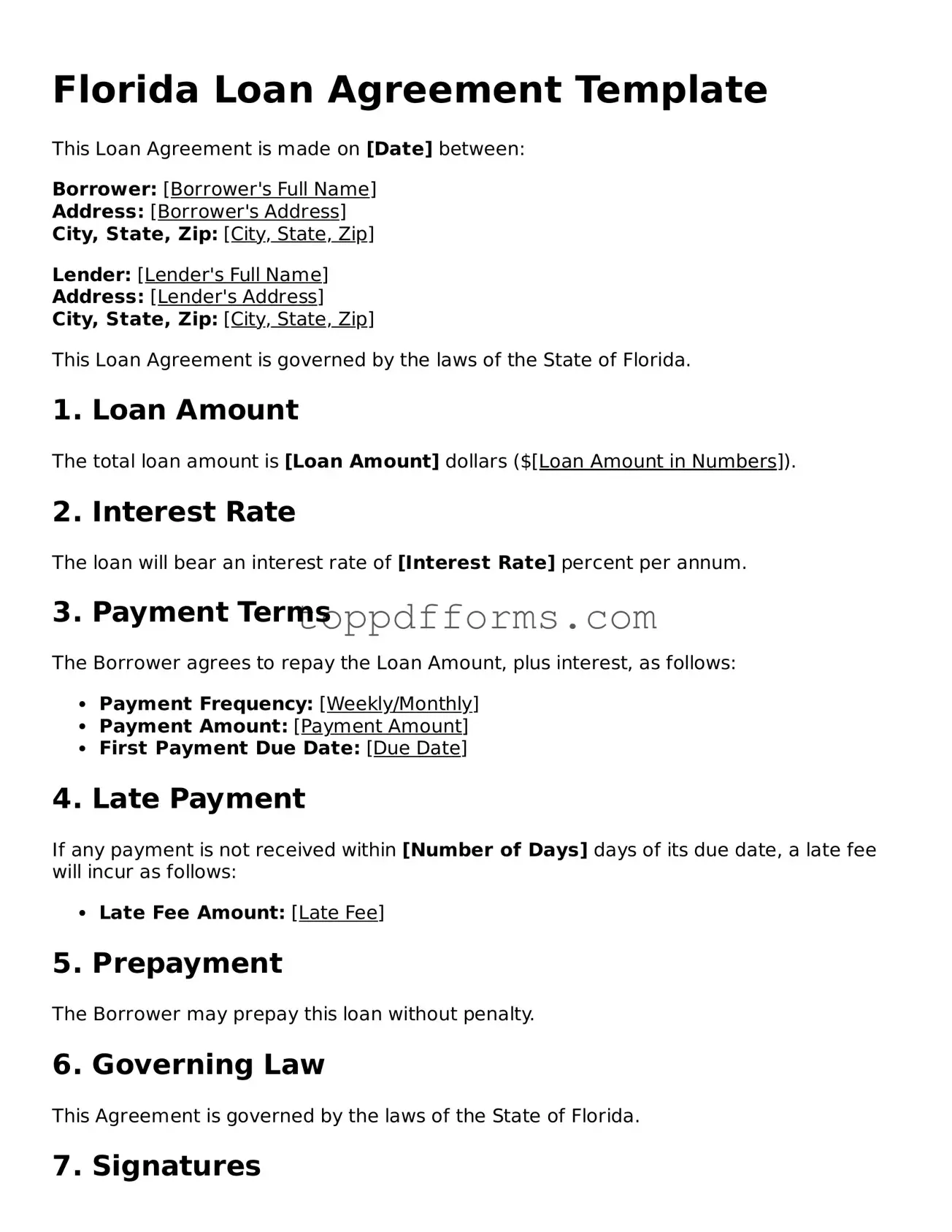What is a Florida Loan Agreement form?
A Florida Loan Agreement form is a legal document that outlines the terms and conditions of a loan between a lender and a borrower in Florida. It specifies details such as the loan amount, interest rate, repayment schedule, and any collateral involved. This form helps protect both parties by clearly stating their rights and obligations.
Who can use a Florida Loan Agreement form?
Anyone who is lending or borrowing money in Florida can use this form. This includes individuals, businesses, and organizations. It's important for both parties to understand the terms of the agreement before signing to ensure that all expectations are clear.
What are the key components of a Florida Loan Agreement?
The key components typically include the names and contact information of both the lender and borrower, the loan amount, interest rate, repayment terms, and any fees. Additionally, it may outline what happens in case of default, such as late fees or legal actions.
Is the Florida Loan Agreement form legally binding?
Yes, once both parties sign the Florida Loan Agreement, it becomes a legally binding contract. This means that both the lender and borrower are obligated to follow the terms outlined in the agreement. If either party fails to comply, the other party may have legal recourse.
Do I need a lawyer to create a Florida Loan Agreement?
While it's not required to have a lawyer to create a Florida Loan Agreement, consulting one can be beneficial. A lawyer can help ensure that the agreement complies with state laws and adequately protects your interests. However, many people successfully create their own agreements using templates or online resources.
Can the terms of a Florida Loan Agreement be modified?
Yes, the terms of a Florida Loan Agreement can be modified if both parties agree to the changes. It’s important to document any modifications in writing and have both parties sign the updated agreement. This helps prevent misunderstandings in the future.
What should I do if a borrower defaults on the loan?
If a borrower defaults, the lender should first review the terms of the Loan Agreement to understand their options. This may include sending a formal notice of default or initiating legal proceedings. It’s often advisable to consult with a legal professional to explore the best course of action.
